February 2024 Update
Ashley Nichols - Feb 09, 2024
The pull back we were looking for at the end of the year occurred in the first week of January. February has traded above the January high. The bulls hope that the market will reach the all-time high and break out above...

Money is a tool. It's something that supports your life!
REMINDER
The RSP contribution deadline is February 29th.
Call our office to make your contribution!
Our Portfolio
We hope you continue to enjoy our podcasts episodes. Watch out for a new Market Commentary with Ken & Stephen this month!
Transactions
The pull back we were looking for at the end of the year occurred in the first week of January. We took the cash we had raised and invested into the Nasdaq 100, S&P 500, and increased our weighting in all individual stocks to 40%. This was well-timed as January had a decent return.
As of January 31, 2024, we are currently around 16% cash, 18% in bonds and 65% in equity.
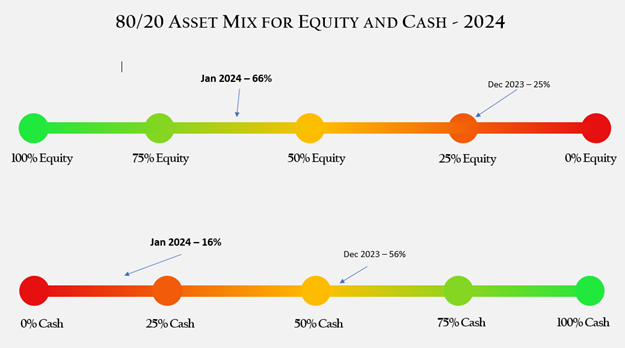
Returns on our 60/40, 70/30 and 80/20 portfolio before fees:
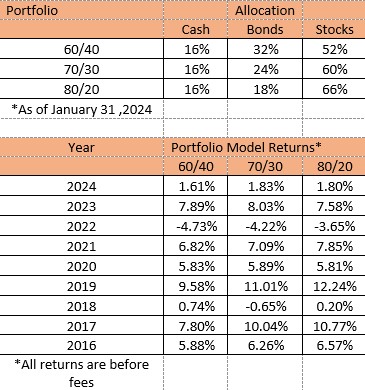
Interesting Charts
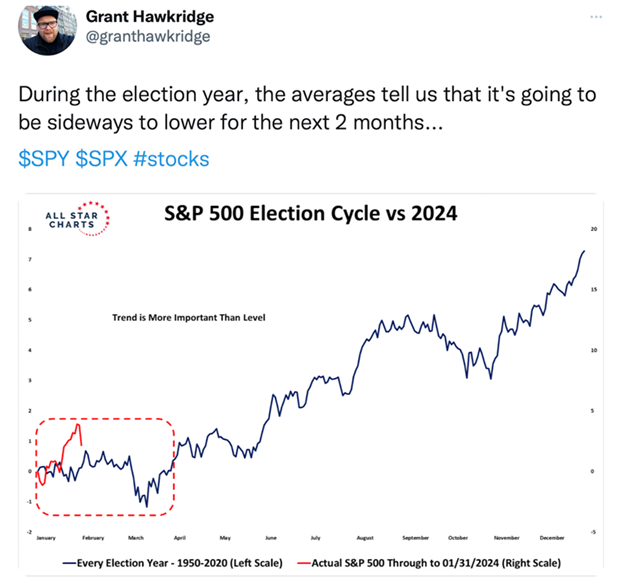
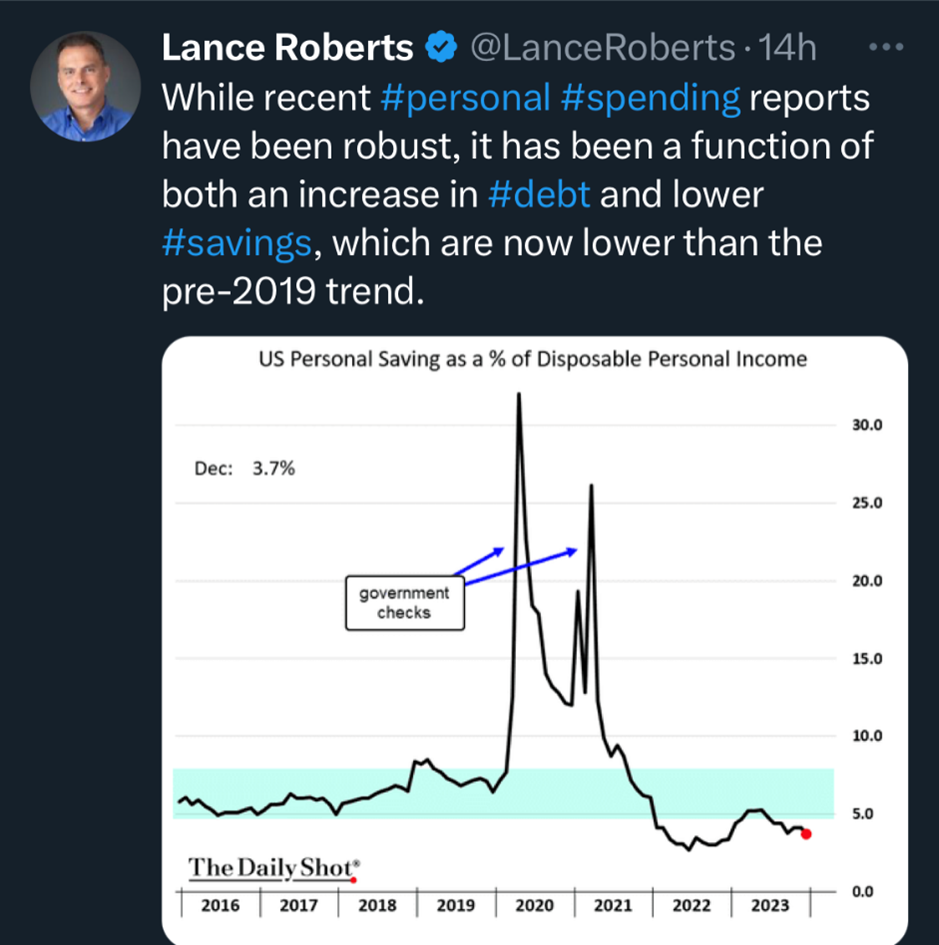
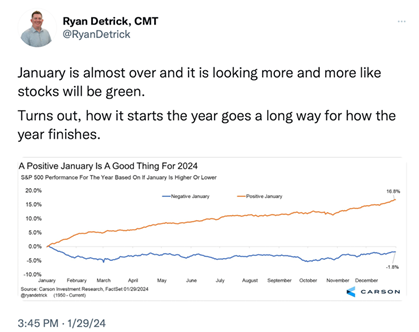
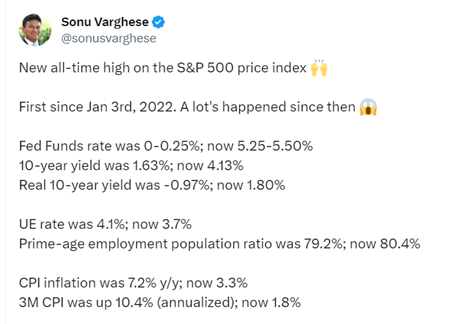
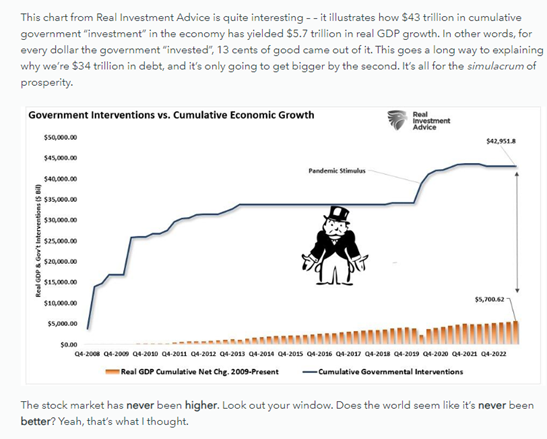
Technical Comments
https://www.brookstradingcourse.com/price-action-trading-blog/
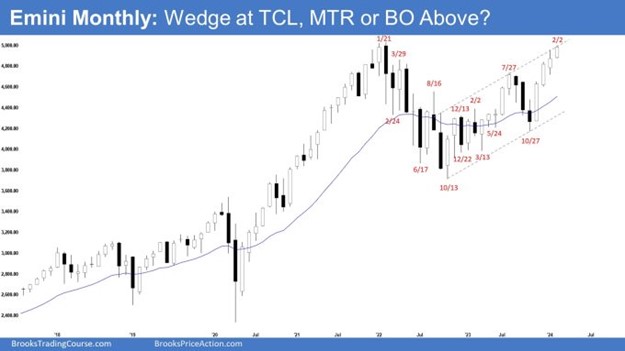
- The February monthly S&P 500 was another consecutive bull bar with a prominent tail above.
- Last month, we said that the odds slightly favour January to trade at least a higher. The all-time high is close enough and could be tested in January.
- January traded higher but did not reach the all-time high.
- Previously, the bulls managed to create a tight bull channel from March to July.
- That increases the odds of at least a small second leg sideways to up after the July to October pullback. The second leg up is currently underway.
- February has traded above the January high. The bulls hope that the market will reach the all-time high and break out above.
- The bears see the current rally as a retest of the January 2022 all-time high and want a reversal from a lower high major trend reversal or a double top.
- They also see a large wedge pattern (Dec 2, July 27, and Feb 2) forming at the trend channel line area.
- Because of the strong rally in the last 3 months, they will need a strong signal bar or a micro double top before traders would be willing to sell more aggressively.
- If February stalls around the January high area or slightly above, it can form a micro double top.
- Since January closed above the middle of its range, it is a buy signal bar albeit weaker.
- For now, odds slightly favor February to trade at least a little higher which it has done.
- The market remains Always In Long and the bull trend remains intact (higher highs, higher lows).
- However, the rally has also lasted a long time and is slightly climactic.
- A minor pullback can begin within a few months before the market resumes higher.
Retirement Savers Are Piling Into Stocks. Is That A Good Idea?
By Lance Roberts | February 2, 2024
As the financial markets grind higher, retirement savers have consciously decided to add more to equity risk. Such was the result of a recent Bloomberg survey.
“Retirement savers want more stocks in their portfolios as a hedge against inflation, potentially offering a long-term tailwind for equities as societies age, according to the latest Bloomberg Markets Live Pulse survey.
Almost half of the 252 respondents said they were putting more funds into stocks as a response to rising prices – far eclipsing the 6% who said they’d be adding the traditional inflation hedge, gold.” – Simon White
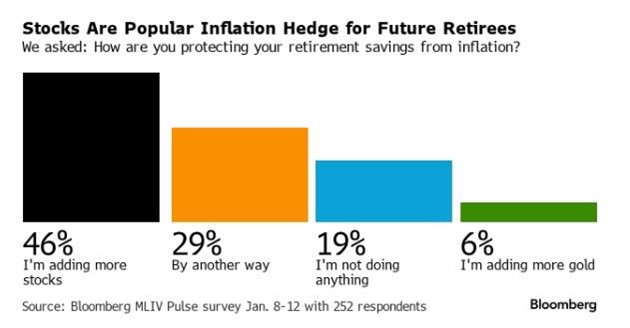
While the respondents said they were buying stocks as a hedge against inflation, which may be part of the answer, the reality is that a surging bull market over the last 14 years is more likely the real reason. The same psychology permeated into the next question, which asked which asset classes would do the best as society ages. Given the real-world experience of most individuals of skyrocketing home prices and stocks, it was not surprising to see both ranking as top answers.
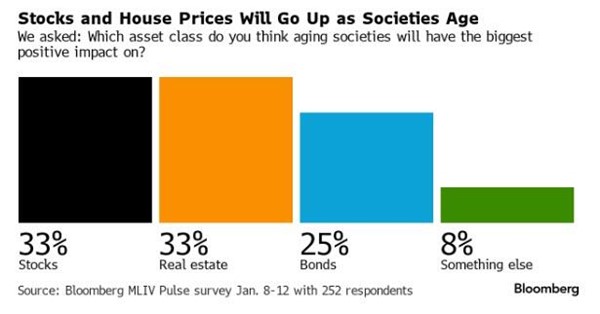
Given the recency bias of most individuals, the responses were unsurprising given the outsized proportion of market gains relative to the long-term averages. Such was the recent topic of “Portfolio Return Expectations Are Too High.” To wit:
The chart shows the average annual inflation-adjusted total returns (dividends included) since 1928. I used the total return data from Aswath Damodaran, a Stern School of Business professor at New York University. The chart shows that from 1928 to 2023, the market returned 8.45% after inflation. However, after the financial crisis in 2008, returns jumped by nearly four percentage points for the various periods. After over a decade, many investors have become complacent in expecting elevated portfolio returns from the financial markets. However, can those expectations continue to be met in the future?”
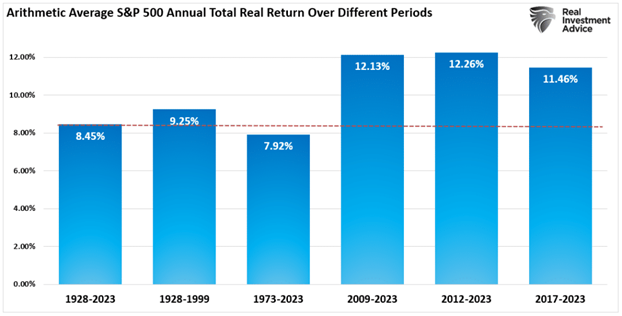
A Staggering Shortfall
There are a couple of apparent reasons individuals are willing to take on increased risk in portfolios, the most obvious being the rather significant savings shortfall. For example, a previous survey by CNBC found that most Americans will need $1.3 million to retire comfortably.
“When it comes to how much they will need to retire comfortably, Americans have a “magic number” in mind — $1.27 million, according to new research from Northwestern Mutual.
The survey found that respondents in their 50s expected to need the most when they retire — more than $1.5 million. For those in their 60s and 70s, who are close to or in retirement, those expectations dropped to less than $1 million.”
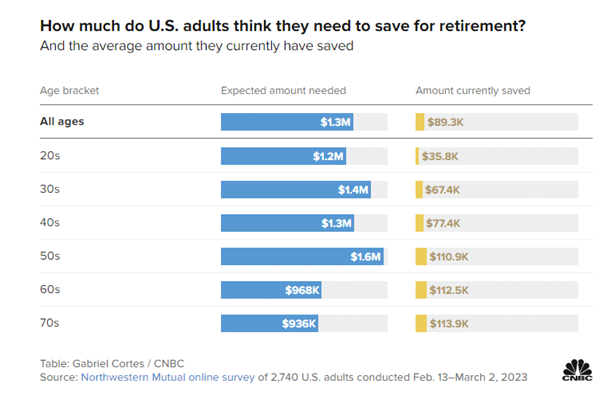
The problem with that data is that most individuals are nowhere close to those levels of savings.
“A recent survey conducted by Clever Real Estate polled 1,000 Gen Xers born between 1965 and 1980 to find out how they fare regarding personal finances and the road to retirement. A staggering 56% of Gen Xers said they have less than $100,000 saved for retirement, and 22% said they have yet to save a single cent.
While the desire to retire may be there, the money just isn’t. A whopping 64% of respondents said they stopped saving for retirement not because they don’t want to but because they simply can’t afford to.“
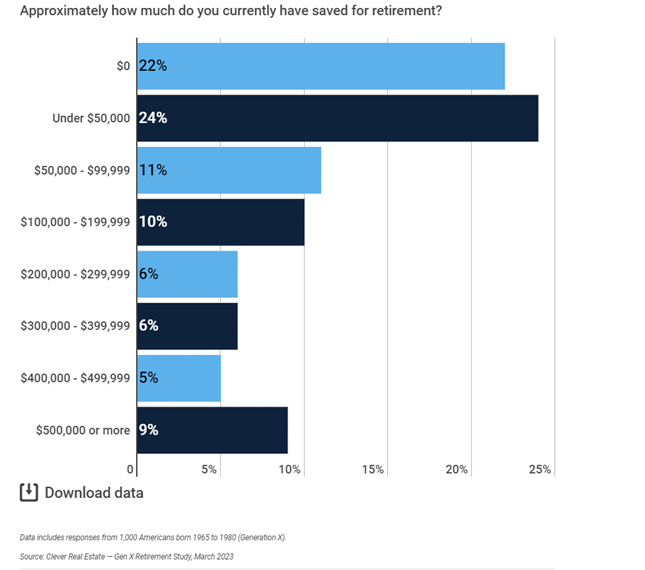
Furthermore, a LendingClub survey shows that 61% of U.S. consumers live paycheck to paycheck.
It’s a dire situation for most Americans, particularly those retirement savers. As such, it is unsurprising that more individuals are looking to the stock market as a solution to make up the shortfall.
However, therein lies the risk.
The Risk Of Risk
One of the incredible genetic traits of humans is the ability to forget pain. The trait is essential to the survival of the species. If cavemen clearly remembered the agonizing pain of being attacked by a predator, they would have likely never left their caves to hunt. If women vividly remembered the excruciating pain of childbirth, they would probably never have more than one. In the financial markets, investors all too soon forget the painful memories of bear markets, particularly when the bull is stampeding.
Currently, the bull market that began in 2009 remains firmly intact. Despite a mild stumble in 2022, the long-term trend remains higher, and investors feel confident that the trend will remain indefinitely. However, a risk has been overlooked amid above-average returns over the last decade. That risk is liquidity, which we discussed in more depth in “The Markets Are Frontrunning The Fed.”
“The psychological change is a function of more than a decade of fiscal and monetary interventions that have separated the financial markets from economic fundamentals. Since 2007, the Federal Reserve and the Government have continuously injected roughly $43 Trillion in liquidity into the financial system and the economy to support growth. That support entered the financial system, lifting asset prices and boosting consumer confidence to support economic growth.”
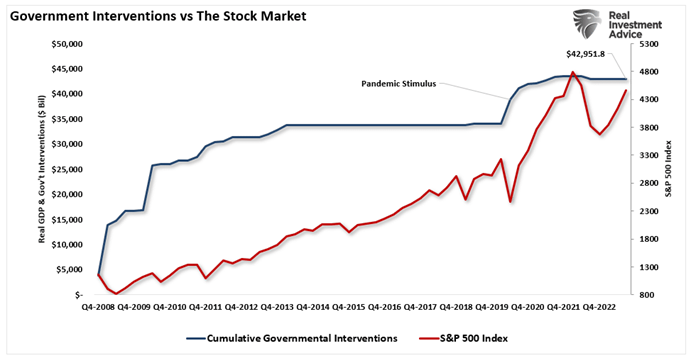
The risk of reduced monetary liquidity may become problematic for stocks to sustain current returns. As shown below, nearly 100% of the index returns from 1900 to the present came during the 4-periods of multiple expansion. With valuations currently very elevated, the reduction of monetary liquidity may lead to the next secular period of “multiple contraction,” which would yield much lower rates of returns.
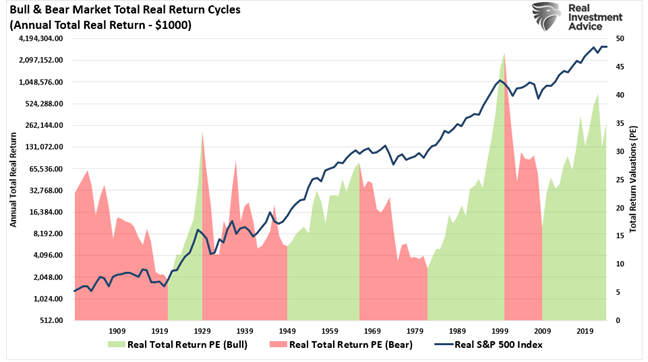
In other words, retirement savers currently allocating more savings to equity risk could well be setting themselves up for an extended period of higher volatility and lower expected rates of return.
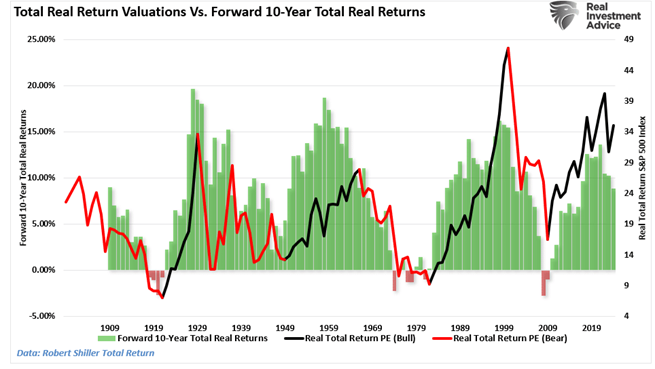
Conclusion
As Jeremy Grantham previously noted:
“All 2-sigma equity bubbles in developed countries have broken back to trend. But before they did, a handful went on to become superbubbles of 3-sigma or greater: in the U.S. in 1929 and 2000 and in Japan in 1989. There were also superbubbles in housing in the U.S. in 2006 and Japan in 1989. All five of these superbubbles corrected all the way back to trend with much greater and longer pain than average.
Today in the U.S. we are in the fourth superbubble of the last hundred years.”
Therefore, unless the Federal Reverse is committed to a never-ending program of zero interest rates and quantitative easing, the eventual reversion of returns to their long-term means is inevitable.
It is hard to fathom how forward return rates will not be disappointing compared to the last decade. However, those excess returns were the result of a monetary illusion. The consequence of dispelling that illusion will be challenging for retirement savers.
However, throughout history, investors have repeatedly invested the most into equity risk and the worst possible times. For retirement savers, this time will likely be no different.
Millennial Minute
Ashley continues her quest on De-Influencing and shares her thoughts on financial influencers and why it may not be a great idea to follow them blindly.
It's not just social media you need to be wary of, but also the TV personalities on the news outlets we have trusted for so long. Many of them are simply selling you a product, and if you follow what they DO instead of what they SAY, you may be in for a big surprise.
Planning
2024 Wealth Facts & Figures
Staying "in the know" when it comes to annual changes in contributions, withdrawals, clawbacks, etc. is very important!
That's why we always provide the year's fact and figures on our website! You can always find them under our "Facts and Figures" tab on our top menu.
You can also download a copy for yourself here!